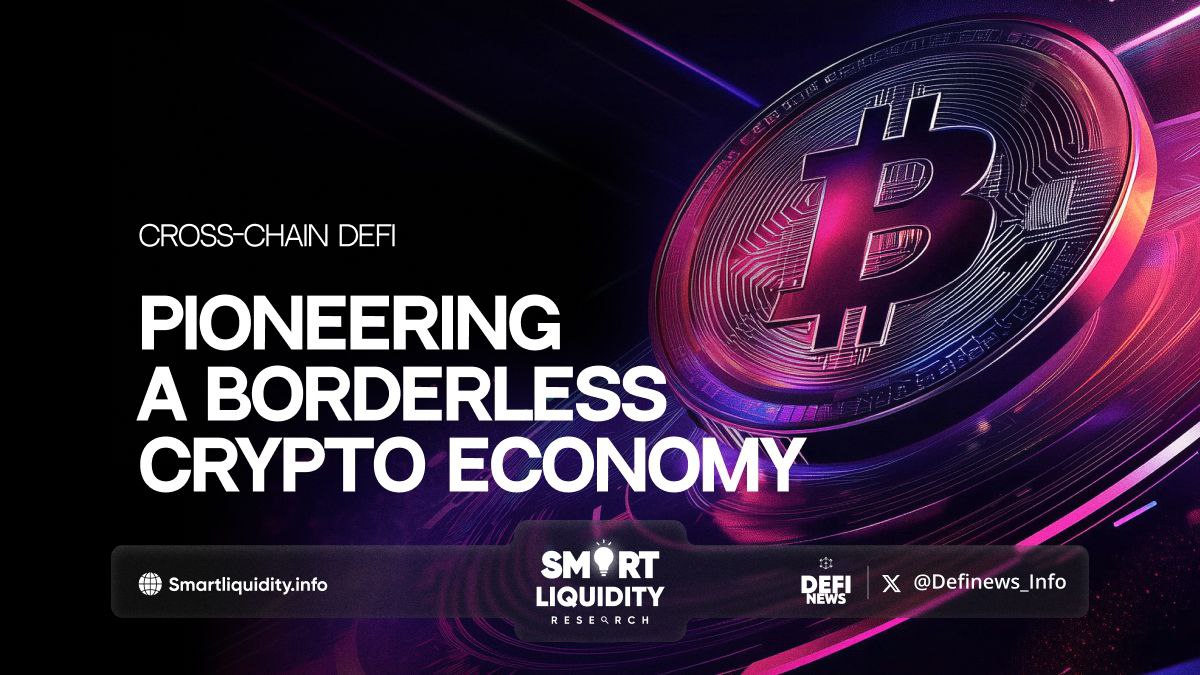The Future of Cross-Chain DeFi


The Future of Cross-Chain DeFi! In the fast-evolving world of decentralized finance (DeFi), innovation is constantly reshaping the landscape. Among the most transformative advancements is cross-chain DeFi, which is setting the stage for a truly borderless crypto economy.
The integration of multiple blockchain networks is not just a technological feat, but a gateway to unlocking a new era of global financial inclusion and freedom.
What is Cross-Chain DeFi?
Cross-chain DeFi refers to the interoperability between different blockchain networks, allowing users to transfer assets and interact with decentralized applications (dApps) across various chains without the need for intermediaries. Traditionally, blockchain ecosystems such as Ethereum, Binance Smart Chain, and Solana operated independently, each with its own set of protocols and assets. However, this isolation hindered seamless asset transfers and restricted liquidity.
With cross-chain protocols like Polkadot, and Cosmos, and layer-2 solutions such as Arbitrum and Optimism, users can now move assets from one blockchain to another, opening new avenues for liquidity, scalability, and cost-efficiency.
Why Cross-Chain DeFi is Critical for the Borderless Crypto Economy
- Enhanced Liquidity Across Markets
By connecting different blockchains, cross-chain DeFi provides a unified ecosystem where assets can flow freely. This enables greater liquidity, helping users tap into decentralized markets with fewer barriers. - Decentralized Access to Global Markets
In traditional finance, market access is often limited by borders, regulations, and intermediaries. Cross-chain DeFi removes these obstacles, offering anyone with an internet connection the ability to participate in a global, decentralized financial system. Whether it’s borrowing, lending, or trading, the opportunities are limitless. - Reduced Costs and Increased Speed
Interoperability across blockchains significantly reduces the need for costly transactions that occur across centralized exchanges. By utilizing protocols like atomic swaps and cross-chain bridges, users can transfer assets at a fraction of the time and cost it would take to use centralized services. - Innovation and User-Centric Solutions
A borderless crypto economy fosters innovation, as developers are free to create decentralized applications without being tied to a specific blockchain. Users benefit from a greater variety of services tailored to their needs, further advancing the mainstream adoption of DeFi.
Challenges to Achieving a Borderless Crypto Economy
While the potential of cross-chain DeFi is immense, there are still some challenges that need to be addressed to realize its full potential:
- Security Concerns
Cross-chain bridges and protocols are often susceptible to exploits and vulnerabilities. A robust security framework is essential to safeguard user assets. - Regulatory Hurdles
As governments around the world begin to take notice of DeFi, regulations may impose restrictions that could hinder its growth. - User Experience
Simplifying the user experience will be crucial for attracting new users. Cross-chain transactions can still be confusing for those unfamiliar with blockchain technology.
The Future of Cross-Chain DeFi
As cross-chain technology matures, the dream of a borderless crypto economy comes closer to reality. Projects such as Polkadot’s parachains, Cosmos’ inter-blockchain communication (IBC), and layer-2 networks are already making strides in this direction. With more development and collaboration, we could soon witness a financial system where assets and value move seamlessly across chains, empowering users around the globe.
In Summary
The advent of cross-chain DeFi is paving the way for a decentralized future, where financial systems are borderless, accessible, and open to everyone. By pioneering this innovation, the crypto industry is well-positioned to challenge the limitations of traditional finance and create a truly global, inclusive economy.




